Your cart is currently empty!
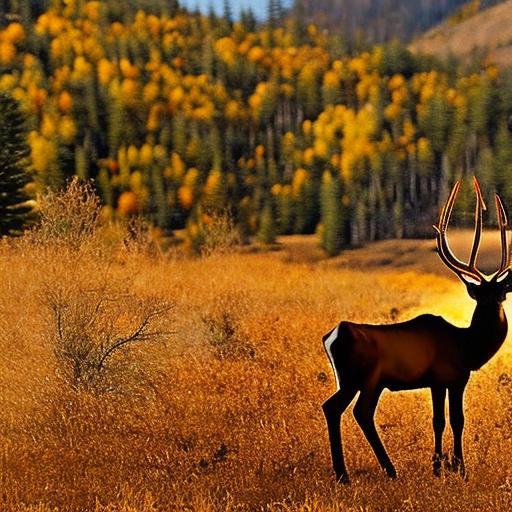
The Thrill of the Hunt: My Cow Elk Hunting Adventure

Hunting is a time-honored tradition that has been passed down through generations. It is a way to connect with nature, challenge oneself, and provide sustenance. In this blog post, we will explore the world of hunting and delve into the various aspects that make it such a unique and rewarding experience. From preparing for the hunt to reflecting on the memories made, we will cover it all.
Key Takeaways
- Proper gear, training, and logistics are essential for a successful elk hunt.
- Exploring the elk habitat can be a beautiful and rewarding experience.
- Reading elk signs is crucial for tracking the herd.
- Taking the shot requires skill and precision.
- Field dressing and processing elk meat is important for turning it into delicious meals.
Preparing for the Hunt: Gear, Training, and Logistics
Before embarking on a hunting trip, it is crucial to have the right gear and training. The gear you choose can greatly impact your success as a hunter. From firearms to clothing to accessories, each item serves a specific purpose and can make a difference in your overall experience. It is important to research and invest in high-quality gear that suits your needs and preferences.
Training is another essential aspect of preparing for a hunt. Whether you are a seasoned hunter or a beginner, honing your skills and knowledge is crucial. This can include practicing shooting accuracy, learning about animal behavior, and understanding hunting regulations. Additionally, physical fitness is important as hunting often involves traversing rugged terrain and carrying heavy loads.
Logistics also play a significant role in preparing for a successful hunting trip. This includes researching hunting areas, obtaining necessary permits and licenses, and planning accommodations and transportation. It is important to be well-prepared and organized to ensure a smooth and enjoyable experience.
The Beauty of the Wilderness: Exploring the Elk Habitat
One of the most captivating aspects of hunting is the opportunity to explore the wilderness and immerse oneself in nature. The elk habitat, in particular, offers breathtaking beauty and a sense of tranquility. From towering mountains to lush valleys, the landscape provides a stunning backdrop for the hunt.
Personal experiences of exploring the wilderness can be transformative. The sights, sounds, and smells of nature create an indescribable connection to the environment. Whether it is witnessing a majestic elk in its natural habitat or observing other wildlife, these moments are etched into the memory forever.
Tracking the Herd: The Art of Reading Elk Signs
| Elk Sign | Description |
|---|---|
| Tracks | Indentations left by hooves in the ground |
| Scat | Excrement left by elk |
| Rubs | Tree bark rubbed off by antlers |
| Wallow | Depression in the ground where elk roll and wallow |
| Hair | Hair left on branches or fences |
| Beds | Depressions in the ground where elk have slept |
| Trails | Paths created by elk walking through the same area repeatedly |
Tracking elk is a skill that requires patience, observation, and knowledge. Reading elk signs is an essential part of the hunting process. This includes identifying tracks, droppings, rubs, and other indicators of elk presence. By understanding these signs, hunters can gain valuable insights into the behavior and movement patterns of the herd.
Personal experiences of tracking elk can be both challenging and rewarding. It requires a keen eye and a deep understanding of the animal’s habits. Following fresh tracks through dense forests or deciphering subtle clues can lead to exhilarating encounters with the herd.
The Moment of Truth: Taking the Shot
The moment of truth in hunting is when a hunter takes a responsible shot at their target. This is a critical moment that requires precision, accuracy, and ethical decision-making. It is important to ensure a clean and humane kill, minimizing suffering for the animal.
Taking a successful shot requires practice and skill. This includes understanding shot placement, controlling breathing and heart rate, and maintaining focus under pressure. It is crucial to be confident in one’s abilities and make ethical choices in the heat of the moment.
Field Dressing and Processing: Turning Elk Meat into Delicious Meals
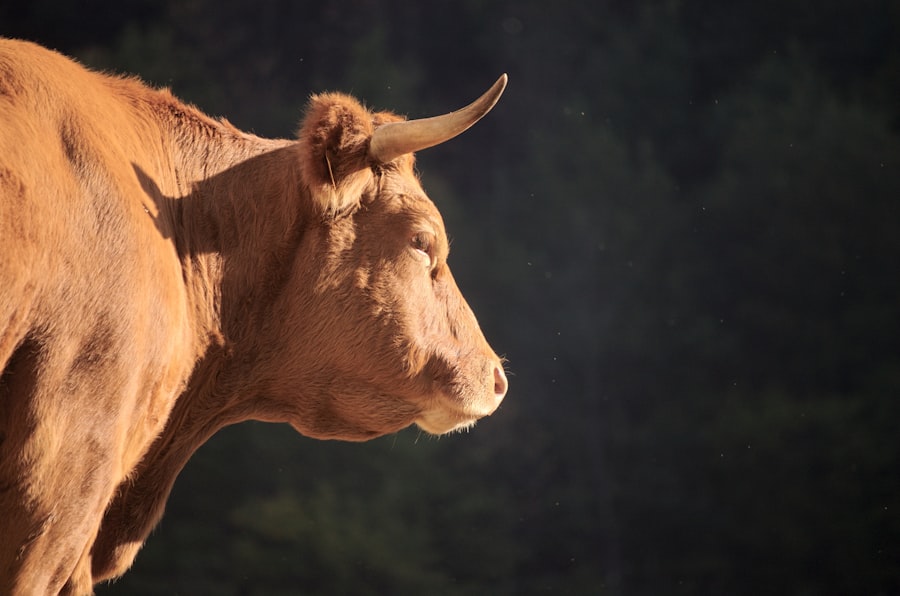
Field dressing and processing elk meat is an important step in the hunting process. It involves removing the internal organs and skinning the animal to prepare it for consumption. This step should be done with care and precision to ensure food safety and quality.
Personal experiences of turning elk meat into delicious meals can be incredibly rewarding. From grilling steaks to making stews to curing jerky, there are countless ways to enjoy this nutritious and flavorful meat. It is a testament to the hunter’s skill and dedication to be able to provide sustenance for themselves and their loved ones.
The Importance of Conservation: Ethics and Sustainability in Hunting
Conservation and sustainability are fundamental principles in hunting. It is important to be an ethical and responsible hunter, ensuring the long-term viability of wildlife populations and their habitats. This includes following hunting regulations, practicing fair chase, and supporting conservation organizations.
Being an ethical hunter means respecting the natural balance of ecosystems and understanding the interconnectedness of all living beings. It means taking only what is necessary and giving back to the environment. By embracing these principles, hunters can contribute to the preservation of wildlife for future generations.
Overcoming Challenges: Dealing with Weather, Terrain, and Other Obstacles
Hunting is not without its challenges. Weather conditions, rugged terrain, and other obstacles can test a hunter’s resilience and determination. However, overcoming these challenges can be incredibly rewarding and build character.
Personal experiences of overcoming challenges while hunting can be transformative. Whether it is enduring harsh weather conditions, navigating treacherous terrain, or facing unexpected setbacks, these moments teach valuable lessons in perseverance and adaptability.
Bonding with Hunting Partners: Sharing the Thrill of the Hunt
Hunting is often a shared experience, and bonding with hunting partners is an important aspect of the journey. Whether it is family members, friends, or fellow hunters, these relationships are strengthened through shared experiences and a mutual love for the outdoors.
Personal experiences of bonding with hunting partners can create lifelong memories. From sharing stories around a campfire to strategizing together in the field, these moments forge deep connections and create a sense of camaraderie that is unique to hunting.
Reflections on the Experience: Lessons Learned and Memories Made
Reflecting on the hunting experience allows hunters to gain insights into themselves and their relationship with nature. Lessons learned can range from practical skills to personal growth. Memories made during the hunt become cherished stories that are passed down through generations.
Personal memories of the hunting experience are often filled with a mix of emotions. From the excitement of the chase to the serenity of being in nature, these moments become a part of who we are. They remind us of our connection to the natural world and the importance of preserving it for future generations.
Looking Ahead: Planning Future Hunting Adventures and Goals
Planning future hunting adventures and setting goals is an important part of the hunting journey. It allows hunters to continue their growth and exploration in the pursuit of their passion. Whether it is exploring new hunting areas, learning new skills, or achieving personal milestones, having a vision for the future keeps the spirit of hunting alive.
Tips for planning future hunting trips include researching new areas, connecting with other hunters, and setting realistic goals. It is important to have a clear vision and take steps towards achieving it. By setting goals and planning ahead, hunters can continue to evolve and deepen their connection with nature.
In conclusion, hunting is a multifaceted experience that encompasses a wide range of emotions and challenges. From preparing for the hunt to reflecting on the memories made, each step along the way contributes to a deeper understanding of ourselves and our place in the natural world. By embracing the principles of conservation, ethics, and sustainability, hunters can ensure that this time-honored tradition continues for generations to come. We encourage readers to share their own hunting experiences and tips, as each journey is unique and valuable.
If you’re interested in cow elk hunting, you might also want to check out this article on “How to Hunt Grouse Without a Dog” from Old Oak Syndicate. Grouse hunting can be a thrilling and challenging experience, and this article provides valuable tips and techniques for hunting these elusive birds without the assistance of a dog. Whether you’re a seasoned hunter or just starting out, this article will help you improve your skills and increase your chances of success. So, grab your gear and head out into the wilderness for an exciting grouse hunting adventure!
FAQs
What is a cow elk hunt?
A cow elk hunt is a type of hunting where hunters target female elk, also known as cows, for meat.
When is the cow elk hunting season?
The cow elk hunting season varies depending on the state and region. It typically runs from late August to early February.
What is the purpose of a cow elk hunt?
The purpose of a cow elk hunt is to manage the elk population and prevent overgrazing of vegetation. It also provides hunters with a source of meat.
What equipment do I need for a cow elk hunt?
You will need a hunting license, a rifle or bow, ammunition or arrows, appropriate clothing and footwear, binoculars, and a hunting knife.
Do I need a license to hunt cow elk?
Yes, you need a hunting license to hunt cow elk. The requirements and fees vary depending on the state and region.
Is cow elk meat good to eat?
Yes, cow elk meat is considered to be a lean and healthy source of protein. It has a mild flavor and is similar to beef.
What are the regulations for cow elk hunting?
The regulations for cow elk hunting vary depending on the state and region. It is important to check with the local wildlife agency for specific rules and regulations. Generally, hunters are required to have a license, follow bag limits, and use appropriate hunting methods.

Herb has been a longtime lover of the outdoors. Whether it be hunting, camping, fishing or just getting outside to reset. Proud father and animal lover. Bourbon anyone?

by
Tags:
Comments

Categories
- Big Game Hunting (301)
- Deer (202)
- Reviews (3)
- Shooting (16)
- Slingshot (1)
- Small Game Hunting (42)
- Upland Hunting (126)
- Waterfowl Hunting (3)

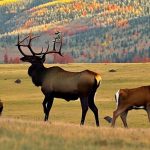
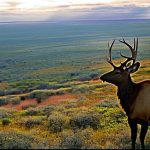
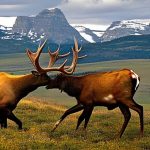

Leave a Reply